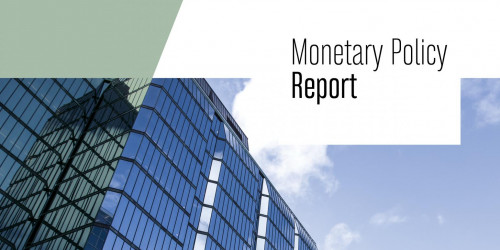Monetary Policy Report Press Conference Opening Statement
Good morning. I’m pleased to be here with Senior Deputy Governor Carolyn Rogers to discuss today’s policy announcement and our Monetary Policy Report.
Today, we maintained our policy interest rate at 5%. We are also continuing our policy of quantitative tightening.
We have three main messages this morning.
First, monetary policy is working. Total consumer price index (CPI) and core inflation have eased further in recent months, and we expect inflation to continue to move closer to the 2% target this year.
Second, growth in the economy looks to be picking up. We expect GDP growth to be solid this year and to strengthen further in 2025.
Third, as we consider how much longer to hold the policy rate at the current level, we’re looking for evidence that the recent further easing in underlying inflation will be sustained.
Before taking your questions, let me take a moment to discuss how the economy is evolving.
We have revised up our outlook for global growth. US economic growth again exceeded expectations, and while growth is expected to slow later this year, economic activity is stronger than previously forecast.
In Canada, growth stalled in the second half of last year and the economy moved into excess supply. The labour market also cooled from very overheated levels. With employment growing more slowly than the working-age population, the unemployment rate has risen gradually over the last year to 6.1% in March. There are also some signs that wage pressures are beginning to ease.
Economic growth is forecast to strengthen in 2024. Strong population growth is increasing consumer demand as well as the supply of workers, and spending by households is forecast to recover through the year. Spending by governments also contributes to growth, and US strength supports Canadian exports.
Overall, we forecast GDP growth in Canada of 1.5% this year and about 2% in 2025 and 2026. The strengthening economy will gradually absorb excess supply through 2025 and into 2026.
CPI inflation eased to 2.8% in February, and price increases are now slowing across most major categories. Inflation rates for durable goods, clothing, food, and services such as recreation and travel have all declined. However, shelter cost inflation is still very high and remains the biggest contribution to overall inflation. Some other services, like restaurant meals, also remain persistently high.
Looking ahead, we expect core inflation to continue to ease gradually. The more timely three-month rates of core inflation fell below 3% in February, suggesting some downward momentum. But with gasoline prices rising, CPI inflation is likely to remain around 3% in the coming months. It is then expected to ease below 2½% in the second half of this year and reach the 2% target in 2025.
As always, there are risks around our forecast. Inflation could be higher if global tensions escalate and this boosts energy prices and further disrupts international shipping. House prices in Canada could rise faster than expected. And wage growth could remain high relative to productivity. On the down side, economic activity globally and in Canada could be weaker than expected, cooling demand and inflation too much.
We don’t want to leave monetary policy this restrictive longer than we need to. But if we lower our policy interest rate too early or cut too fast, we could jeopardize the progress we’ve made bringing inflation down.
Based on our forecast and the risks, Governing Council decided it was appropriate to maintain the policy rate at 5%.
We also concluded that, overall, the data since January have increased our confidence that inflation will continue to come down gradually even as economic activity strengthens. Our key indicators of inflation have all moved in the right direction and recent data point to a pickup in economic growth.
I realize that what most Canadians want to know is when we will lower our policy interest rate. What do we need to see to be convinced it’s time to cut? The short answer is we are seeing what we need to see, but we need to see it for longer to be confident that progress toward price stability will be sustained. The further decline we’ve seen in core inflation is very recent. We need to be assured this is not just a temporary dip.
In the months ahead, we will be closely watching the evolution of core inflation. We remain focused on the balance between demand and supply in the economy, inflation expectations, wage growth and corporate pricing behaviour as indicators of where inflation is headed.
To conclude, we’ve come a long way in the fight against inflation, and recent progress is encouraging. We want to see this progress sustained.
With that summary, the Senior Deputy Governor and I would be pleased to take your questions.
